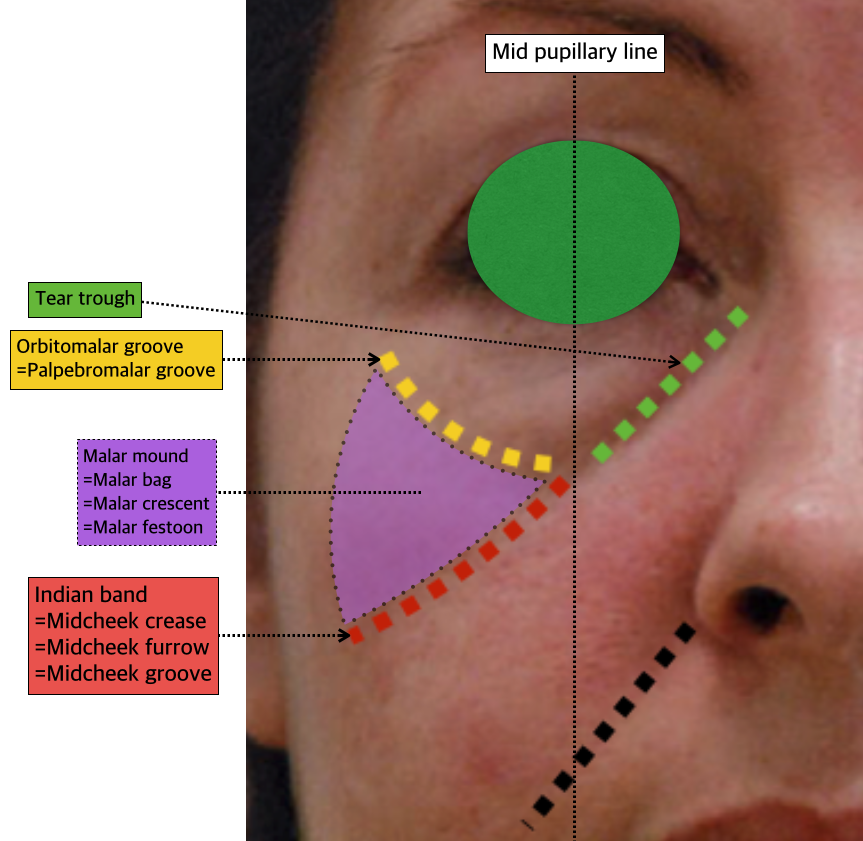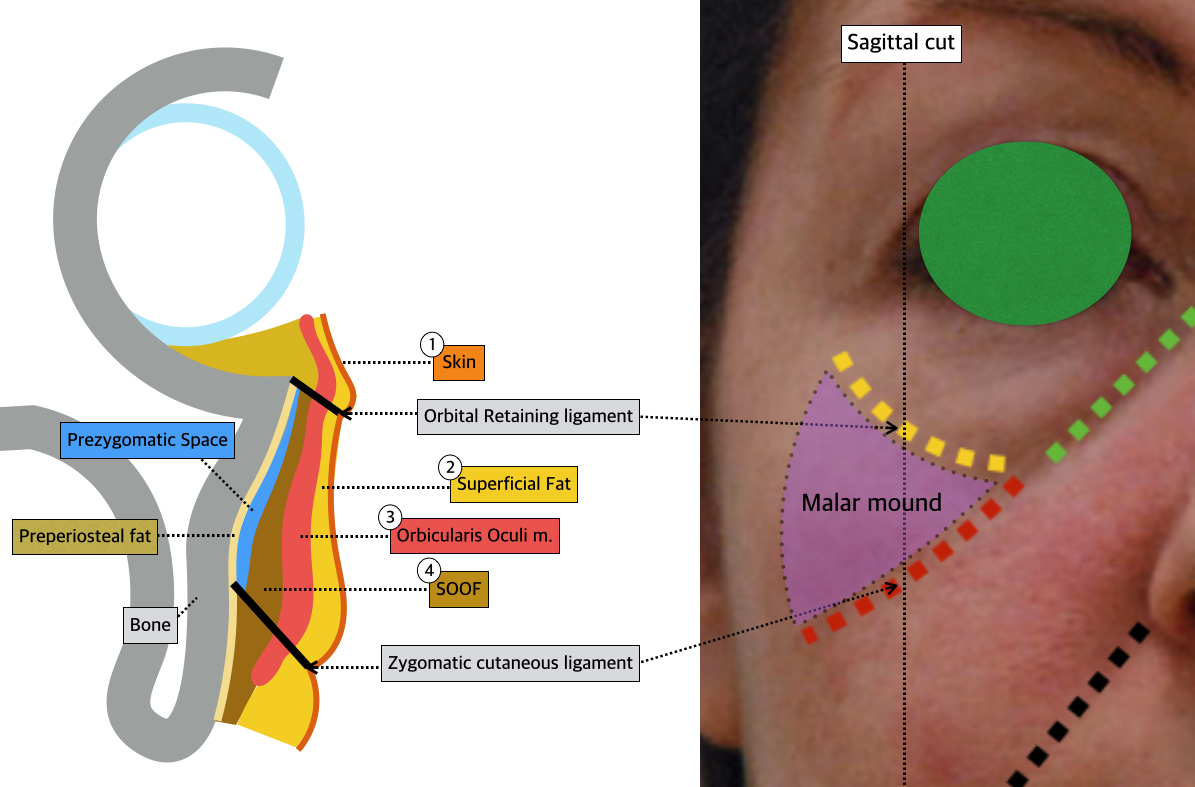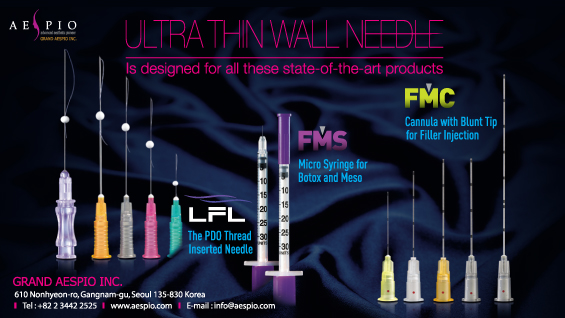
Indian bands
Indian bands refer to the wrinkles that stretch latero-diagonally downward from the midpupillary lines in the mid face. They are not as conspicuous as nasolabial folds (Image1). Indian bands are also scientifically known as the midcheek crease (=furrow, groove). Sometimes, the orbital fat herniation is confused with malar mound. Orbital fat herniation is the convex area formed by the orbital retaining ligament (ORL) above the orbitomalar (=palpebro) groove and tear trough. On the other hand, the malar mound (a.k.a. bag, crescent or festoon), area marked purple in <Image1>, is the triangular area between the orbitomalar groove and Indian band which coincides with the boundaries of the prezygomatic space.
Malar Mound
Image 2’s sagittal cross section shows the inner anatomical structure. The malar mound is contained by the ORL at the top and zygomatic cutaneous ligament at the bottom. However, the difference is that the ORL is a continuous ligament structure whereas the zygomatic cutaneous ligament is inconsistent with sporadic empty spaces, through which the levator anguli oris muscle passes.
A thin fat layer exists under the skin in the malar mound, which is the outer layer of the malar fat pad. The orbicularis oculi muscle and SOOF (sub-orbicularis oculi muscle) lie underneath the malar mound and the preperiosteal fat touches on the bone. The prezygomatic space lies between the SOOF and preperiosteal fat (Image2).
The malar mound is susceptible to swelling after facial surgery or procedure, which is often referred to as malar edema. At first, I did not think much about malar edema but its definition is becoming extensively studied by many scholars. Simply speaking, fluids can stagnate more easily in this area compared to other areas. For example, when we work late or eat right before going to bed, our face may become puffy in the morning. The swelling generally affects the whole face but particularly the mid face area under the eyes. Dark circles or the malar mound are more pronounced in the morning and disappear as the day progresses. If the Indian bands or dark circles can be simply explained with the changes in the fat pad or supporting ligaments, such disappearance throughout the day would not be possible. For these reasons, the malar edema should be further examined.
Depending on the scholar, the lower boundary of the malar mound is seen as the zygomatic cutaneous ligament or malar septum. This difference is minimal. Some scholars refer to the temporary swelling of this area as malar edema and continued swelling as malar mound. Additionally, they refer to malar mound accompanied by sagging skin as malar festoon.
In case of temporary swelling of this area following a thread lift, procedure or surgery in the nearby area and resulting in pronounced cheekbones, it may help to explain to the patient the mechanism of malar edema and wait for natural disappearance. If malar mound or malar festoon continues, local liposuction, facelift, ORL release, or realignment of skin/muscle may help.

Image 1. Malar mound.


Image 2. Sagittal cut of the Indian band.
[Advertisement] ULTRA THIN WALL NEEDLE – Manufacturer: AESPIO(www.aespio.com)
-To be continued-




















